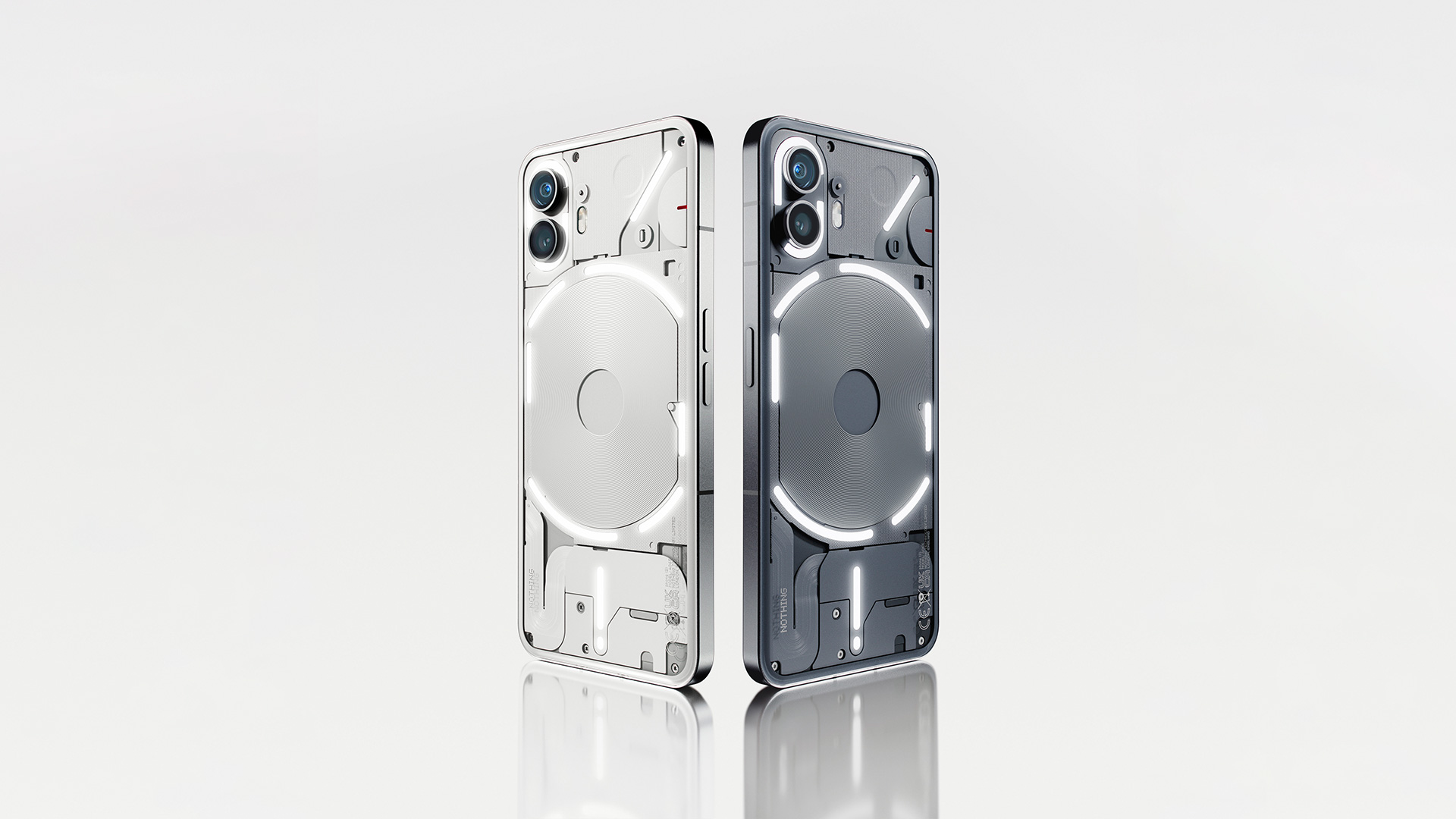Nothing Phone (2) launched with two 50MP cameras and upgrades across-the-board
Nothing sticks with its dual-camera strategy for its Phone (2) with major updates to performance, UI and styling

The Nothing Phone (2) is official, launching in the US and UK with a higher price and better specs than last year's Nothing Phone (1). We were big fans of the original's value-for-money proposition and two-camera setup, with the phone combining features like wireless charging and an auto-focusing ultra-wide camera at a midrange price.
For 2023, Nothing isn't replacing its Phone (1), instead keeping it on sale and expanding its portfolio with the fancier Phone (2).
Exactly what's fancier about the Nothing Phone (2) than Phone (1)? There have been incremental upgrades made across the board. The phone's screen is now a little taller – less iPhone and more Android – and the back panel has a slight curve that rounds off into its metal frame, and more segmented Glyph Lights. It also has more power under the hood, and Nothing has refreshed its main camera and selfie camera hardware.
Going into a little more detail on the Nothing Phone (2)'s camera, its main sensor is a Sony IMX890, a minor upgrade to the IMX766 in the Nothing Phone (1). Measuring 1/1.56-inch, it isn't the largest sensor we've seen at the price.
The recently launched Honor 90 has a large 1/1.4-inch sensor and a sky-high 200MP resolution. While this suggests that Honor's offering will capture slightly shallower depth, in the Phone (2)'s favor, Nothing includes OIS – a feature missing from the Honor 90. The Phone (2)'s main camera lens also has an open f/1.9 aperture and a 24mm equivalent focal length.
Nothing has brought back the same 50MP ultra-wide it debuted on the Phone (1), combining a Samsung JN1 1/2.76-inch sensor with an f/2.2 lens and autofocus.
For 2023, the selfie camera has been upgraded to a 32MP Sony IMX615 with an f/2.34 aperture, and the phone can capture 4K video at up to 60fps.
The best camera deals, reviews, product advice, and unmissable photography news, direct to your inbox!




Nothing's saying the right things when it comes to sustainability. The Phone (2) mid-frame is 100 percent recycled aluminum, its plastic elements are 80 percent recycled, and all the Tin and copper (conflict minerals) are 100 percent recycled too.
Nothing's packaging is a slim, flat box that's also plastic-free, and the phone's carbon footprint is 53.45kg, with the average carbon footprint of a phone estimated at around 80kg.
Other Nothing Phone (2) highlights include a 6.7-inch OLED display with a max full-screen brightness of 1000 nits, peak spot brightness of 1600 nits, a 120Hz adaptive refresh rate, and HDR10 support.
The phone's also splash, water, and dust resistant, rated to IP54, and it has an in-display fingerprint scanner and support for face unlock.
With a 4700mAh battery, Nothing has bumped up the capacity when compared to the 4500mAh Nothing Phone (1), and it charges at up to 45W wired and 15W wireless.
With Qualcomm Snapdragon 8+ Gen 1 power, while the Phone (2) isn't the mightiest phone around, it's still significantly better-suited for games than its predecessor, and with up to 512GB storage and 12GB RAM, it should handle plenty of apps and games being installed and run alongside one another.
The Phone (2) also enjoys an overhauled interface with Nothing OS 2.0, offering a more stylized take on Android, which marries with the Glyph Lights around the back to offer a customizable, fun evolution and a great point of differentiation.
So how much do all these upgrades cost? That depends on where you are and which version you pick up. Starting with 8GB RAM and 128GB storage, the entry-level model costs $599 / £579. If you want more of everything, the 12GB RAM and 256GB storage option costs $699 / £629, while the 12GB RAM and 512GB option costs $799 / £699.
With the Nothing Phone (2) shipping in White and Dark Grey, both colors are available for pre-order now and will be available to buy from July 17.
Basil Kronfli is a freelance technology journalist, consultant, and content creator. He trained in graphic design and started his career at Canon Europe before moving into journalism. Basil is also experienced in video production, independently running the YouTube channel TechEdit, and during his time at Future, he worked alongside the Digital Camera World team as a senior video producer.



